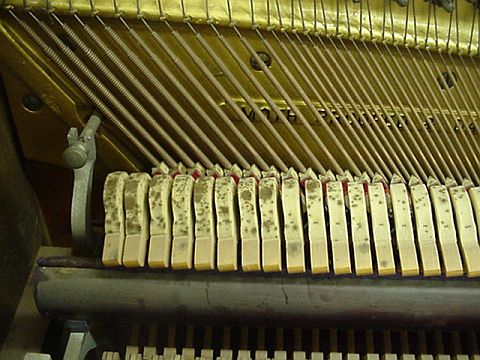 |
This early spinet piano was rescued from the back of a country church. Mildew attacked the bass hammers due to excessive humidity where the piano was stored. |
Key beds accumulate dust and debris over the years. Fragments of sheet music and paper clips are the most common obstacles. |
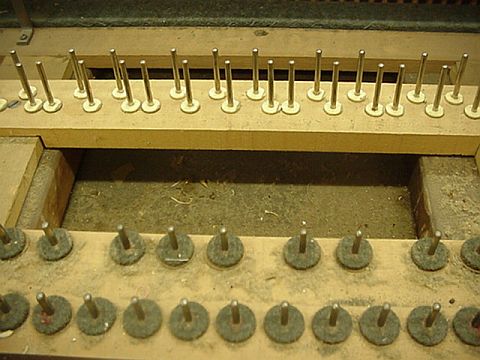 |
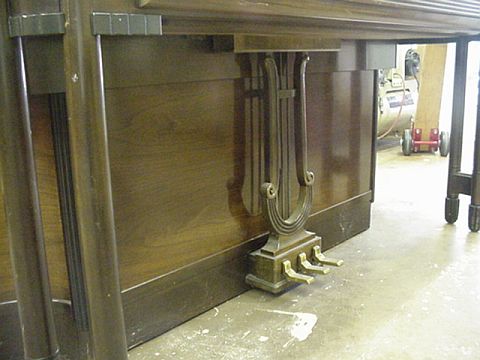 |
The grand style pedal lyre is attractive but obstructs access to the bottom of the piano. The case has the usual marks of a church piano, compounded by the fact that the piano was built without casters. |
Bottom view of the piano with our certified security agent and quality control inspector monitoring all activity. |
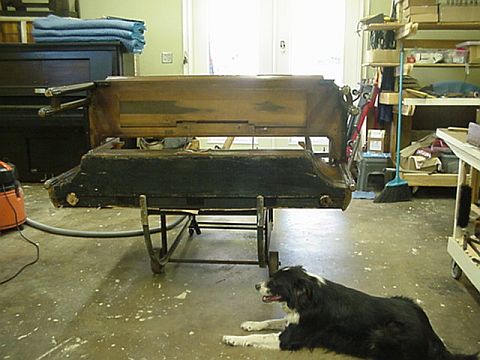 |
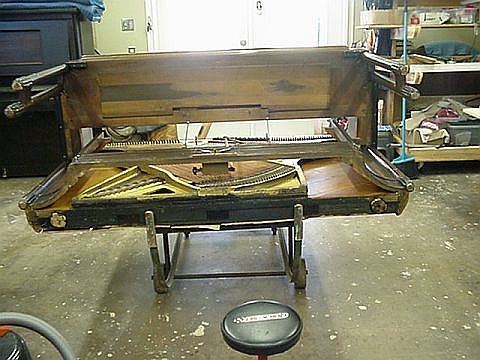 |
Bottom board is removed to gain access to the bass string hitch panel prior to removing the bass strings. |
Top view of the cleaned, sanitized keybed and plate. |
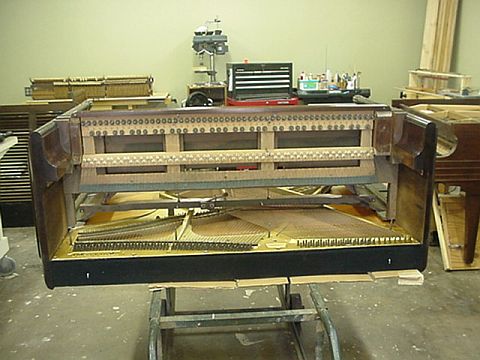 |
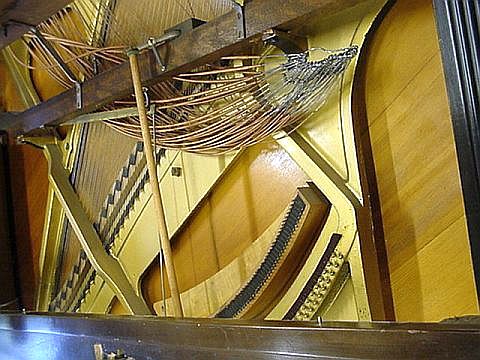 |
The bass strings are unhitched and moved to the side for bass bridge repair. |
A close view of the bass bridge shows the reason for repair. |
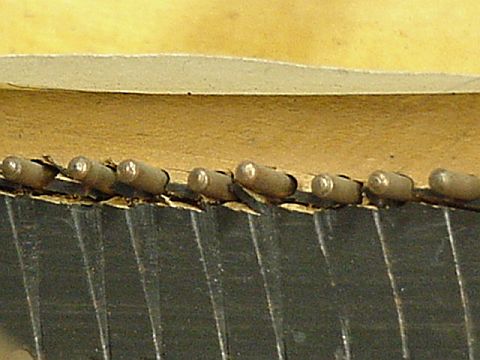 |
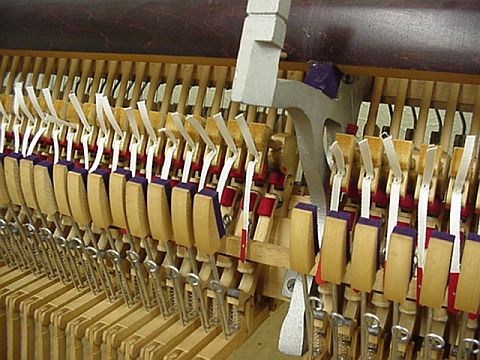 |
Action reconditioning included a new set of bridle straps. |
Reshaping the bass hammers took care of the mildew. Regulating the action produced a remarkable improvement. |
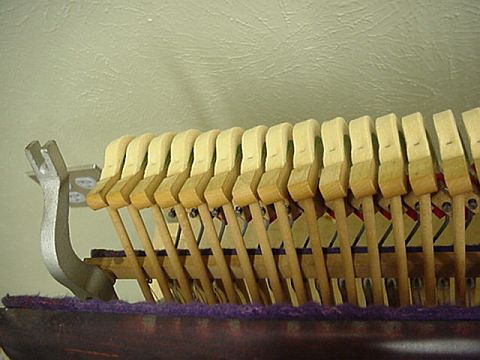 |
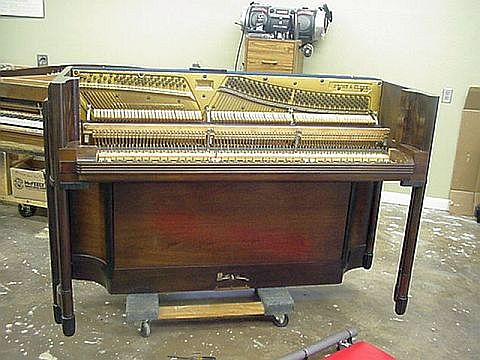
| After touching up the case and reconditioning the action, we regulated and voiced the piano. The style of the piano fit the decor of its new home perfectly. |